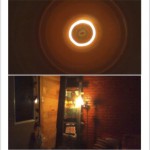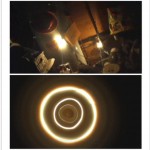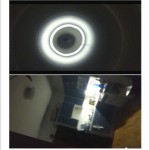SOUND INSTALLATION
The organization of a city, a neighborhood, a street; the presence of built and natural objects, the materials that form them – all are attributes that define the acoustic character of the urban sound environment. But the sound space itself possesses still many more macro-variations. According to Murray Schafer: the geography and the climate give the soundscape of a region its own, unique sonic identity. In the wide open spaces of the North, the ‘noise’ of winter is that of water freezing, of ice, of snow. These elements construct the unique tonality that is the continental North, just as the sea defines the sonic identity that is the maritime world. (Murray Schafer : The Tuning of the World – The Soundscape, 1977)
Geography itself therefore speaks of the potential to map places through the senses. The soundscape, in its very concept, invites us to contemplate and to appreciate the world as audible. But what if we moved beyond the audible soundscape to create a sonic identity with elements that are present but that we do not hear…that is, through electromagnetic frequencies? They are invisible, they are inaudible, they are odourless, and yet, they are everywhere. They are part of our everyday environment. Yet, because light is the only part of the electromagnetic spectrum to be visible, it is only with the eyes that we can experience electromagnetic rays.
Indeed, we are surrounded by light. Our eyes detect it and record details like color, brightness and movement. But if our eyes could hear, it is a world of unknown sound that would reveal itself to our ears. In the field of electronics, there is a photoelectric component that can capture light waves and transform them into sound signals: the photo diode. The photo diode picks up where our eyes leave off by transposing the pulsing of light into audible frequencies.
The use of light to directly generate sound is both the starting point and the resulting phenomenon of Tourner de l’oeil. At its core, Tourner de l’oeil is also an exploration of place through the invention of a new sound geography and more precisely: a way of mapping and redefining the geography of London by transposing its light frequencies into sound frequencies.
PHOTO
These photos were taken in my house during experiments with the video camera attached to an electric drill (SpinCamera). I made a montage to give an idea of what look like the diptychs in their final achievements.
VIDÉO
1. Results from my research on optical sound during a residency at OBORO in October 2013 in Montreal. I included this video because it helps to understand the process of optical sound as we can clearly sees me handle the light behind the devices.
Fichier : 01. Excitations No: 47 (9 :08)
2. Experimentations during the residency at OBORO in October 2013.
Fichier : 02. Optical Sound – OBORO (3 :21)
3. Video documentation of my last sound installation L’excitation sonore de Zoe T. presented at the gallery La Bande Vidéo at Meduse during the Mois Multi 14 Festival in February. Sound is produced only from the light and the image is made with the camera attached to a motor and filming while rotating.
Fichier : 03. L’excitation sonore de Zoé T. (03 :53)
4. TOURNER DE L’ŒIL (Expérimentation avec caméra vidéo)
This video was shot from a camera attached to an electric drill. The video begins on a view of the kitchen area from the living room. Then I moved slowly the camera at the Cascade water heater, the TV, the living room lamp and slowly I return to the kitchen. By movements slowly from left to right, the circumference of the circle changes in size from the smallest to the largest, and even to get out of the frame.
Fichier : 04. Le tour du salon (sans son) (0 :56)
5. TOURNER DE L’ŒIL (Expérimentation avec caméra vidéo)
Same experiment as the above video.
Fichier : 05. Cascade (0 :55)




